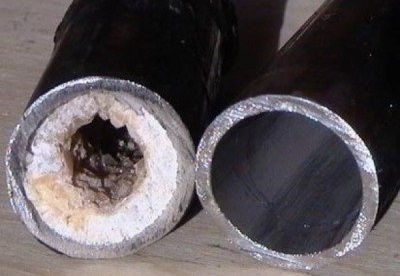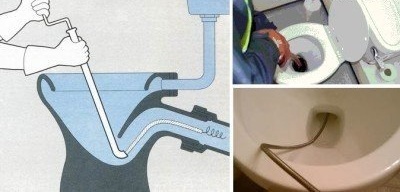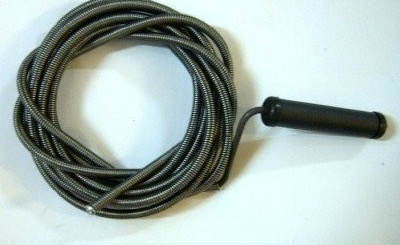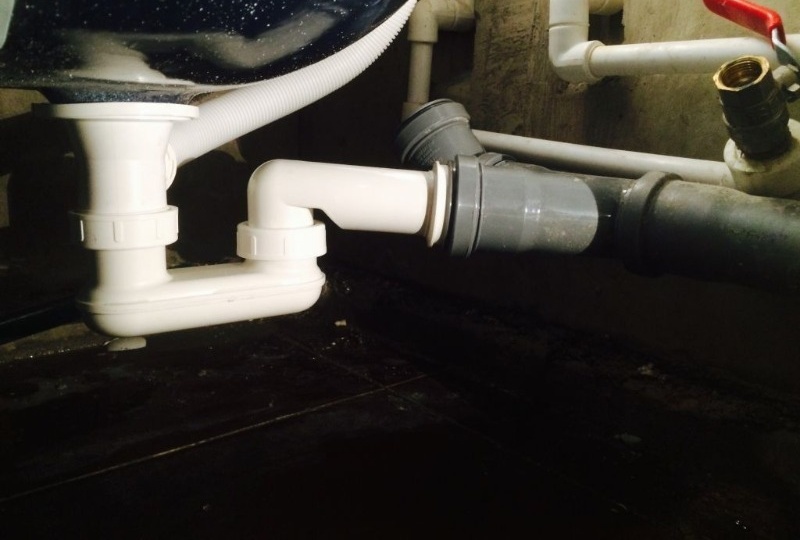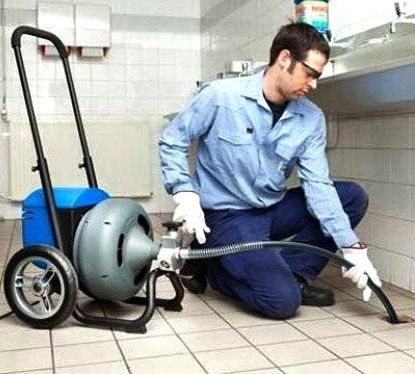Sewer cleaning cable: varieties, selection tips and application example
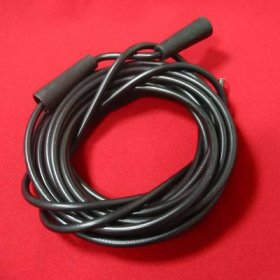
The new sewer system works flawlessly, but after some time, dirt accumulates in the pipes, creating traffic jams. The first sign is slowly leaving water, the second is the appearance of a specific smell. To get rid of trouble, you should remove the blockage. The problem is easily solved if you know how to clean the sewer with a cable. Indeed, it is sometimes easier to master the technology of cleaning sewer pipes than to wait for plumbing.
Types of blockages and their causes
Each of the listed blockages interferes with the full use of the sewer system, and can also cause its complete stop.
Operational blockage
It occurs due to the ingress of hair, wool, food particles, fat, sand, small fibers of the fabric. The walls of the pipe are gradually overgrown with deposits, making the passage hole narrower, until it finally “grows”.
A blockage of this type lends itself well to cleaning with both chemical means and a cable.
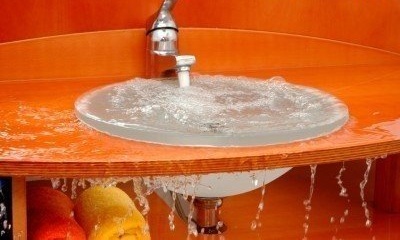
You should not wait until the blockage turns into a dense impenetrable cork, it is better to carry out cleaning work at the first signs of obstruction of pipes
Mechanical blockage
It happens in connection with a violation of the rules for the operation of the sewer system. Out of ignorance or inaccuracy, large objects are thrown into the toilet, which get stuck in the narrowest places. They are a barrier to wastewater, in addition to detain all the rest of the sewer garbage. As a result, a large and dense blockage occurs, the removal of which requires the dismantling of pipes. If the item is not very large, for example, a plastic bag, it is possible to pull it out with a cable.
Technological blockage
May appear due to improperly installed pipes or due to wear of the sewer. A one-time cleaning in this case will not help, you should completely replace the pipes or correct the mistakes made during their installation.
Varieties of plumbing cables
The division of cables into species occurs according to their size - diameter, length. In addition, some products have additional nozzles.
Common types of cables, starting with the smallest:
- Rope cable for cleaning sewers made of galvanized steel with a diameter of 6 mm. It has strength, durability, sufficient flexibility. The standard length of such a cable is 5 m. The product is intended for use in apartments and private houses.
- Cable for cleaning sewers with a diameter of 9 mm, which is a hollow spiral. It is also considered a household tool.
- A product with a diameter of 13.5 mm and a length of 25 m is considered professional. It has the form of a spiral of spring wire (1.8 mm). One end is equipped with a curved handle.The cable is equally suitable for cleaning risers, and for removing blockages in horizontal pipes. There are similar products and small lengths, they are used for cleaning toilets.
- A cable with a diameter of 16 mm is a serious professional equipment. The central shaft is entwined with a 3 mm spring wire. The cable length is 60 m. The tension structure, if necessary, turns the flexible product into a rigid one, similar to a bar. Even the most difficult blockages cannot resist him.
“Advanced” masters advise breaking the end of the cable pressed at the factory with a hammer to make a kind of brush. With its help, various garbage is much easier to get.
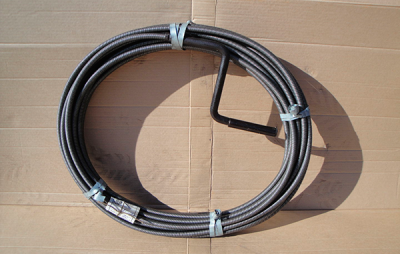
The simplest model for removing blockages is a sturdy steel cable with a small handle for easy rotation
Instructions for use of equipment
For private use, models with a diameter of 6 and 9 mm, having a length of 5-6 m, are suitable. They are able to remove blockages of an operational, and sometimes mechanical, character.
Together with the cable, you can purchase a set of nozzles designed for blockages of various types. Cleaning with a punch or rotary tool is more effective.
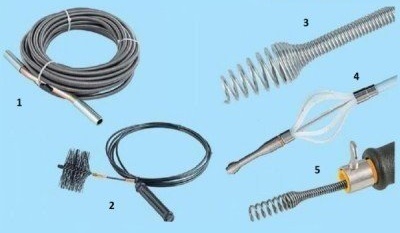
Devices for cleaning pipes: 1 - plumbing cable; 2 - brush-brush; 3 - pear-shaped nozzle for cleaning the toilet; 4 - a device for cleaning pipes up to 50 mm; 5 - manual pinwheel
Procedure:
- Before starting cleaning, gloves must be worn and the floor covered with foil.
- The tip of the tool is inserted into the pipe, holding the cable rolled into a ring (deploy it only to the length necessary to clean the blockage).
- Slowly push the working end of the cable back and forth, rotating it in one direction. During operation, the direction of rotation cannot be changed.
- When the cable reaches the blockage, it will become harder to move it. You should try to destroy the cork with short translational movements.
- If the blockage is large, the cable will sometimes have to be removed to clean it from dirt.
- As a result of cleaning, the drains will begin to flow freely, however, the pipes should be rinsed with hot water at maximum pressure.
This completes the cleaning process. The cable is thoroughly washed with a brush with detergent, rinsed with hot water, dried, rolled into a ring and placed in storage.

